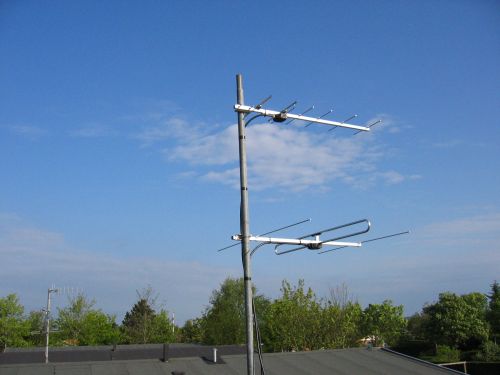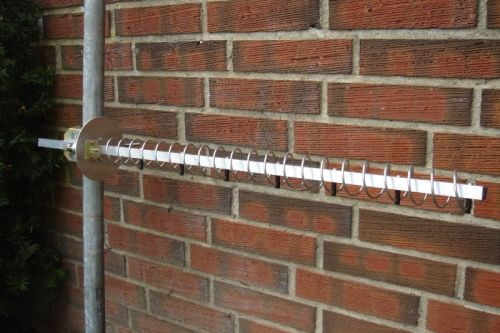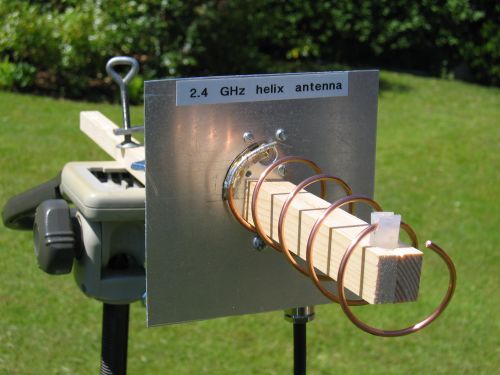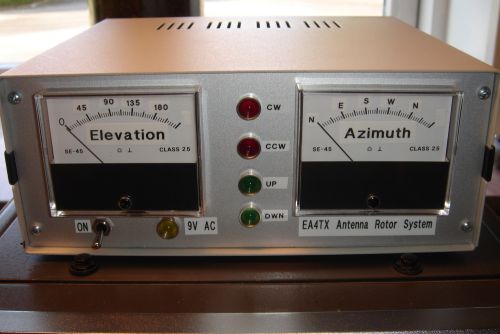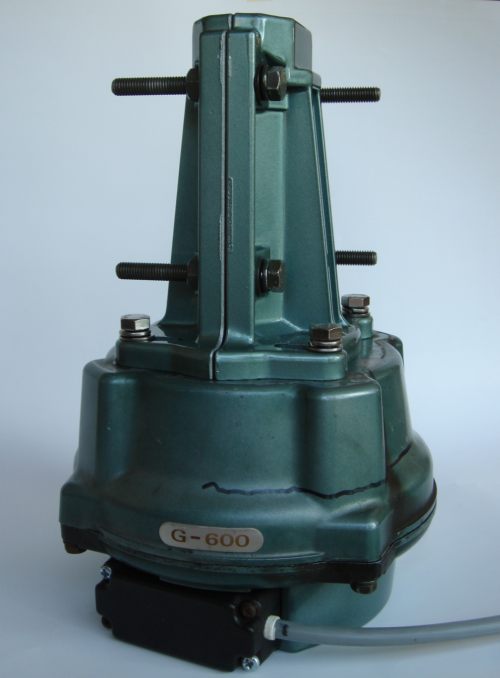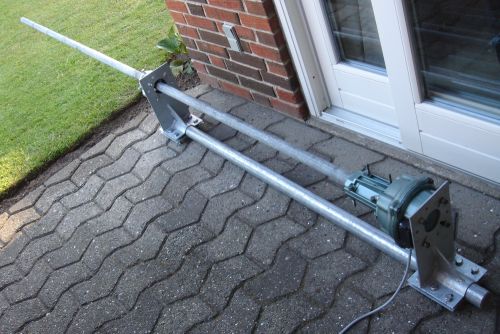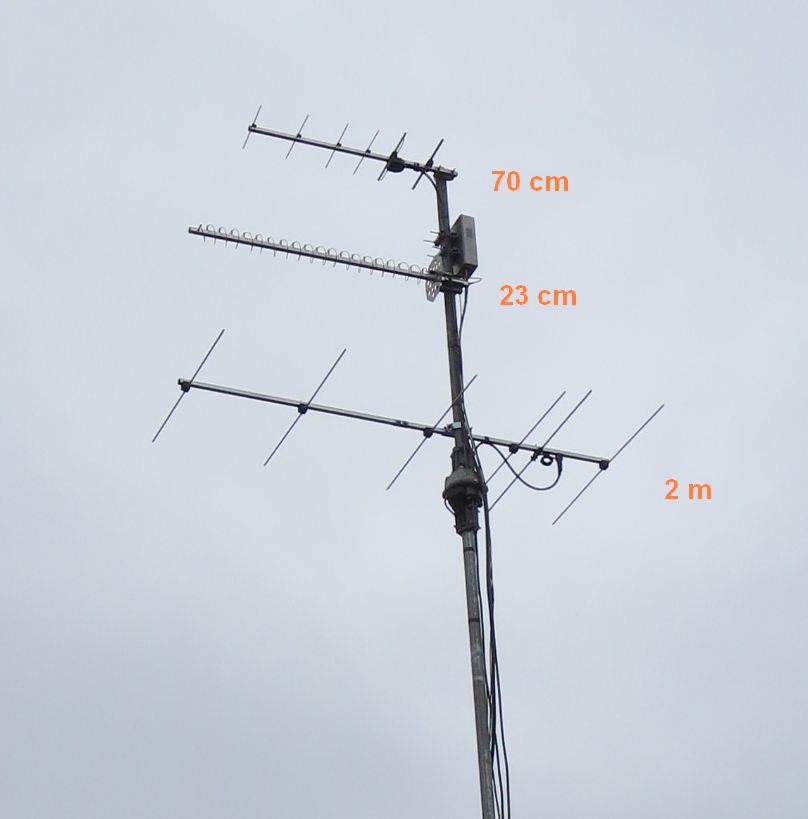Satellite antennas and rotator
2 m and 70 cm antennas
|
Yagis for 2m and 70 cm. |
2 m
antenna 70 cm antenna |
23 cm antenna
|
23 cm
helix |
13 cm antennas
|
|
13 cm
helix - 21turns This 13
cm antenna is a 21-turns helix from Wimo
(Helix13). The helix is made of aluminium wire, which does not
corrode like copper does. The polarization is RHCP. The antenna is
temporarily mounted at ground level for testing. |
|
5-turns helix antenna for 13 cm. |
13 cm helix - 5 turns |
Antenna rotator system
|
|
Control box There are two meter
circuits inside the box, one for azimut metering and one for elevation
metering. Each meter circuit measures the wiper voltage of the rotator
potentiometer and displays the value on an analog panel meter. Power is supplied
from an external transformer. A PSU-board inside the control
box feeds the RCI-SE board and delivers a DC voltage to the
two rotator potentiometers. The EA4TX control
software, which runs on my PC, supports a preset function. The user
sets the desired compass direction. The rotator then starts, turns the
antenna to the same direction, and switches off automatically. |
|
The RCI-SE board. |
RCI-SE board The RCI-SE board is
connected to the printer port (LPT-port) of my PC in order to
communicate with the EA4TX control software. The RCI-SE measures the
actual antenna direction using A/D converters. Each A/D converter measures
the voltage on the wiper of the rotator potentiometer. This value is converted
into an 8 bit binary digit and sent to the control software on the PC. The board controls the
rotators by means of relays. In my case I'm using four relays: LEFT, RIGHT,
DWN, and UP. The fifth relay (AUX) is intended for rotator
brake control. The RCI-SE requires 12 V
DC at max. 150 mA, which is supplied from a homemade power supply
board. |
|
|
Azimuth
rotator I bought the rotator used on Ebay. It was in good working order, but I had to replace the 500 ohm potentiometer inside the housing.
The potentiometer is supplied with 5 volts
control voltage from the control box. The feed-back voltage, which is
measured by the RCI-SE board, is proportional to the horizontal position of
the antenna. The original Yaesu
control box is now used as a power supply for the rotator. |
|
|
Antenna assembly A 1½" steel pipe (38 mm) is the moving part of the
antenna assembly. This pipe is rotated by the G-600 and supported by the
bearing KS-65 (just visible near the lawn). Two stainless steel platforms (PLS 50 from UKW Berichte ) carry the rotator
and the bearing. The platforms also create some distance to the permanent
2" (50 mm) pipe, which will be mounted on the brick wall of the house
using wall brackets. |
|
Antenna
assembly mounted on the brick wall. |
Completed antenna
project This picture shows the
completed antenna project. The permanent pipe is
mounted on the brick wall using ordinary wall brackets (they can be obtained
in radio/TV shops). The rotating pipe carries 3 antennas:
|
Written by OZ1BXM
Lars Petersen. Latest revision 28-August-2009.
